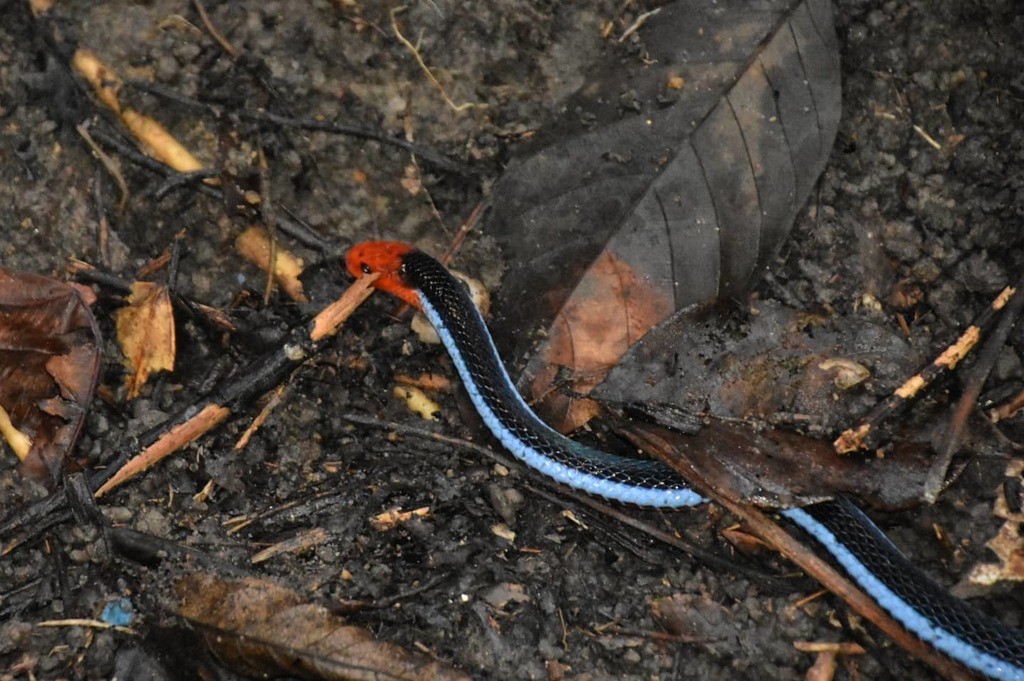Blue coral snake
A species of Asian coral snakes Scientific name : Calliophis bivirgata Genus : Asian coral snakes
Blue coral snake, A species of Asian coral snakes
Scientific name: Calliophis bivirgata
Genus: Asian coral snakes
Content
Description General Info
 Photo By drimachuck , used under CC-BY-NC-4.0 /Cropped and compressed from original
Photo By drimachuck , used under CC-BY-NC-4.0 /Cropped and compressed from original Description
This species was assigned to the new world coral snake genus Maticora until phylogenetic studies revealed this species to be nested within the tropical coral snake species clade Calliophis and sister species to Calliophis intestinalis, the banded Malaysian coral snake. This is a medium-sized coral snake with a slender body. The adult can reach 1.8 meters long. It has a red head, tail and belly. The back is dark blue to black in color, and it usually has a large blue or white stripe on each flank. The snake, especially when juvenile, is often confused with the pink-headed reed snake (Calamaria schlegeli) as they share similar habitat and appearance. But the latter is much smaller, reaching a maximum length of 50 cm (20 in). The reed snake is nonvenomous, while the coral snake is potentially lethal. 
General Info
Lifespan
12-20 years
Diet
Blue coral snake is a carnivorous species with a primary diet of small reptiles. The species often feeds on snakes, lizards, and occasionally small rodents, demonstrating prowess in capturing fast-moving prey.
Appearance
Blue coral snake is a slender, elongated serpent, reaching lengths of up to 1.5 meters. Its scale-covered skin shows vibrant coloration ranging from bluish-black to reddish-brown, often marked by dual yellow stripes along the animal’s back. Blue coral snake has a small, flat head distinct from a cylindrical body which ends with a short tail. There are no significant appearance differences due to age, gender, or subspecies.
Behavior
Blue coral snake exhibits a solitary, nocturnal lifestyle, operational during dusk and dawn. Notably, this species possesses the unique behavior of caudal luring, where it mimics a worm to attract prey. Geared towards survival, the animal's bright coloration serves as aposematic signaling to potential predators. It also demonstrates some territoriality, potentially attacking intruders with its potent venom.
Scientific Classification
Phylum
Chordates Class
Reptiles Order
Lizards and snakes Family
Elapids Genus
Asian coral snakes Species
Blue coral snake